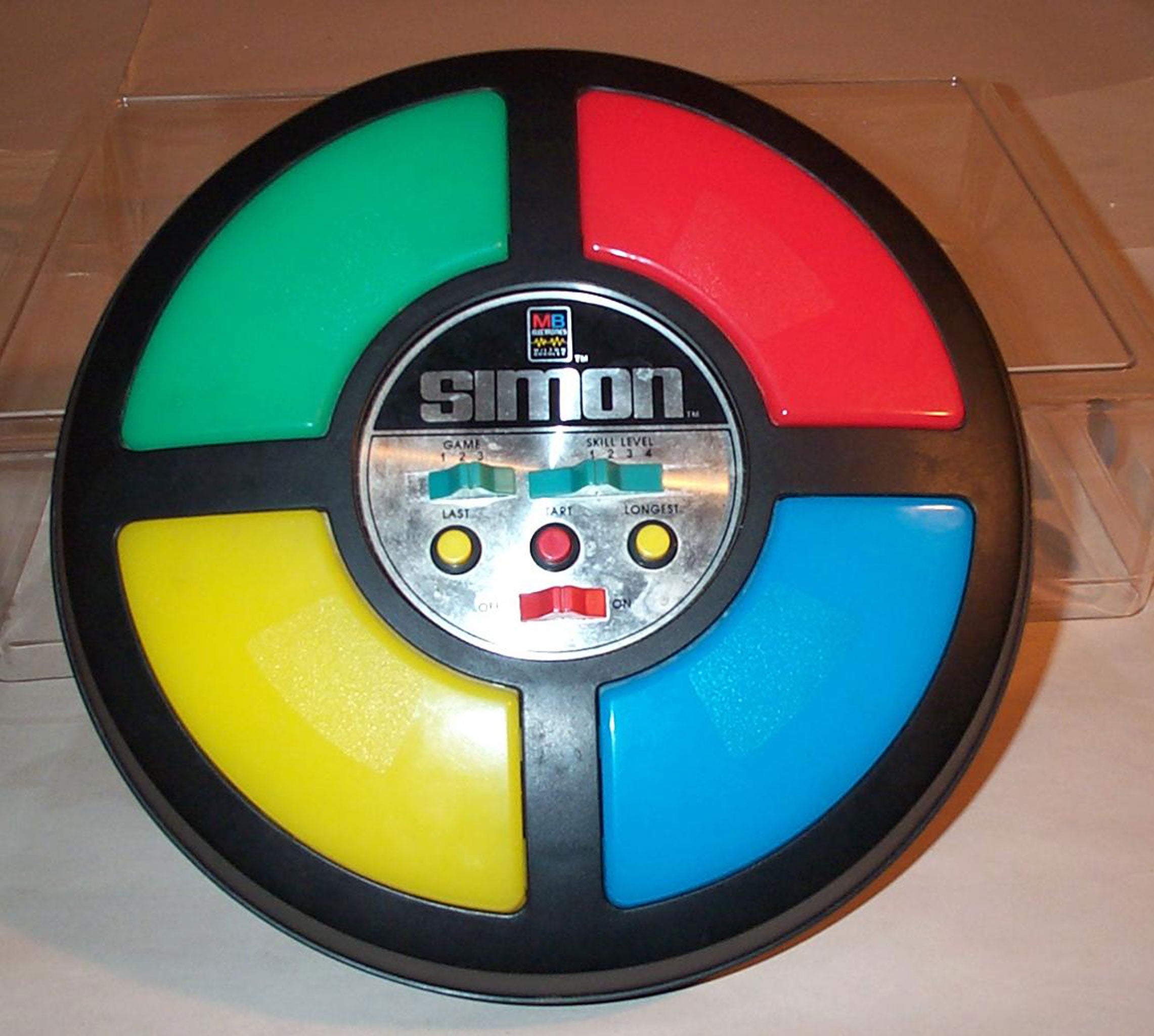It was all the rage in the Seventies...now copycat game 'Simon' is making a comeback

Just after midnight on 15 May, 1978, toy manufacturer Milton Bradley unveiled its new game at legendary New York nightclub Studio 54, amid what you'd hope were unbridled scenes of rampant cocaine ingestion and promiscuous sexual activity. In a bizarrely incongruous display, a huge model of the toy hung suspended over the dancefloor directly above, you'd hope, Cher, Liza Minnelli and Andy Warhol. OK, let's be honest – details of that night are sketchy. But this four-button toy with the dispiritingly bland name of 'Simon' would end up being the biggest-selling toy of that year.
Simon's skill modes and game options belied its preposterously simple operation. A button flashed and played a sound. You pressed that button. It then added a light and a sound to the sequence. You pressed them both. And you kept going until you went wrong and heard a rasping fart noise. Mimic, or lose.
A stultifying game of copycat it may have been, but ownership elevated your social status. "Nobody beats Simon," gasps a girl in an early TV advert, as a young brainbox begins executing feats of memory at rapid speed. Adverts pitched at adults featured an opulent dinner party where socialites were exhorted to "push till you're blue in the face". Which they did, amid scenes notably devoid of rampant cocaine ingestion and promiscuous sexual activity.
Simon was the brainchild of Ralph H Baer, who in the 1960s had led development of the first home video game console, the Magnavox Odyssey. In the early 1970s he'd suffered the frustration of seeing Atari nick the idea behind his tennis game for the Odyssey, market it as 'Pong' and achieve huge success. But Baer and his colleague Howard Morrison had a plan which would result in sweet revenge.
They'd seen an Atari game in amusement arcades with the alluring name of 'Touch Me'. It stood a metre tall, weighed 55 kilos, and in exchange for 25 cents it allowed you to press four large buttons in a dull test of memory. Positioned next to frenetic action games like 'Astro Race', Touch Me was doomed to fail. But Baer and Morrison saw its potential as a handheld; they patented it, built a prototype and sold it to a delighted MB Games.
Once Simon-mania took hold, knock-offs were everywhere. If you've got an original, it'll have a green button top left, red top right, yellow bottom left and blue bottom right, the four notes forming a joyous, clarion-style fanfare in A major. Some versions, however, play a minor key, adding an air of wretched despondency to the gameplay.
Rock legends Queen loved it, apparently. In his Ultimate Illustrated History of the band, writer Phil Sutcliffe notes that the cover of Queen's Hot Space album represents "their enthralment" with Simon. "Queen were signalling their use of Simon's capricious flashing lights as an aesthetic template for their own foray into the increasingly extreme hedonistic characteristics of the genre," he says, maybe alluding to rampant cocaine ingestion and promiscuous sexual activity, but maybe not.
Versions of Simon have appeared over the years – most notably Strip Simon for the iPhone (now banned) where correct manoeuvres caused attractive women to remove their clothes. But now, on its 35th birthday, Simon is being relaunched in the UK by Goldfish & Bison. They're doing the same with Spirograph, apparently. Here's to a very retro Christmas.
Join our commenting forum
Join thought-provoking conversations, follow other Independent readers and see their replies
Comments
Bookmark popover
Removed from bookmarks